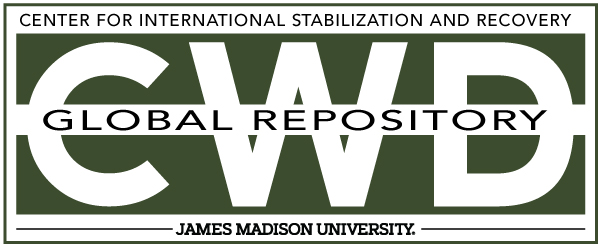Document Type
Article
Creative Commons License

This work is licensed under a Creative Commons Attribution-Noncommercial-No Derivative Works 4.0 License.
Publication Date
Summer 7-2006
Keywords
Advocacy and International Law, Bosnia and Herzegovina, Mine Action, United Nations Development Programme, UNDP, Integrated Mine Action Programme, IMAP, GICHD
Abstract
The break-up of Yugoslavia led to the 1992-1995 Bosnian war, which resulted in more than 200,000 deaths, massive displacement, and widespread landmine contamination. There was no clear victor in the conflict, and the General Framework Agreement for Peace (GFAP) established a loose confederal structure, with a weak central government (the State), two Entities (the Federation of Bosnia-Herzegovina and the Republika Srpska or RS) and, within the Federation, ten cantons (each with its own constitution). Because of the danger of renewed conflict, NATO fielded an Implementation Force (IFOR) to enforce the military provisions of the GFAP, while the broader international community established the Peace Implementation Council (PIC) and appointed a High Representative who had the authority impose legal decrees, annul legislation that was inconsistent with GFAP or other international obligations, and exclude individuals from public office. Renewed conflict has been avoided, but the GFAP arrangements have not yet led to a properly functioning state. In addition to its political problems, post-conflict reconstruction and development have been hampered by extensive contamination by landmines and other explosive remnants of war (ERW). Bosnia is probably the most mine contaminated country in Europe, and certainly one of the most contaminated in the world. The mine action effort has received extensive international support since early 1996. However, rivalries among donors hindered coordination in the initial years, and donor confidence was rocked by corruption allegations in 1999-2000. Since then however, Bosnian authorities have enacted legislation (2002), established a unified planning and coordination structure for the programme, completed a Landmine Impact Survey (LIS), and formulated a coherent strategy. This consolidation of the programme's institutional make-up has allowed national officials responsible for mine action to rebuild donor confidence and improve programme performance. Indeed, national mine action officials have introduced a number of innovations, at least one of which warrants replication in other mine-affected countries. The United Nations Development Program (UNDP) has actively supported Bosnia's mine action efforts since 1996. Originally, it managed the mine action centre (MAC) responsible for compiling and maintaining the database of minefield records and for coordinating the national programme. These responsibilities were transferred to national authorities – both State and Entity – in 1998, at which point UNDP initiated its multidonor financed Integrated Mine Action Programme (IMAP), now in its third phase as a nationally executed project. In spite of some rocky periods, IMAP has been successful in supporting the emergence of national capacities for planning and coordinating the mine action programme. The numbers of technical advisors have fallen from over 40 in 1998 to one part time ‘strategic advisor' today. Financial contributions from Bosnia's governments have increased steadily, and an agreement is in place for the State government to cover all operating costs of the MAC by 2008. While not the principal conduit for financing demining operations, IMAP has provided a useful channel for some donors to contribute to demining. In addition, IMAP has provided modest but useful support to the demining capacities of the armed forces. In the opinion of the Evaluation Team, IMAP has been an effective instrument for supporting the development of national capacities.
Included in
Defense and Security Studies Commons, Peace and Conflict Studies Commons, Public Policy Commons, Social Policy Commons



